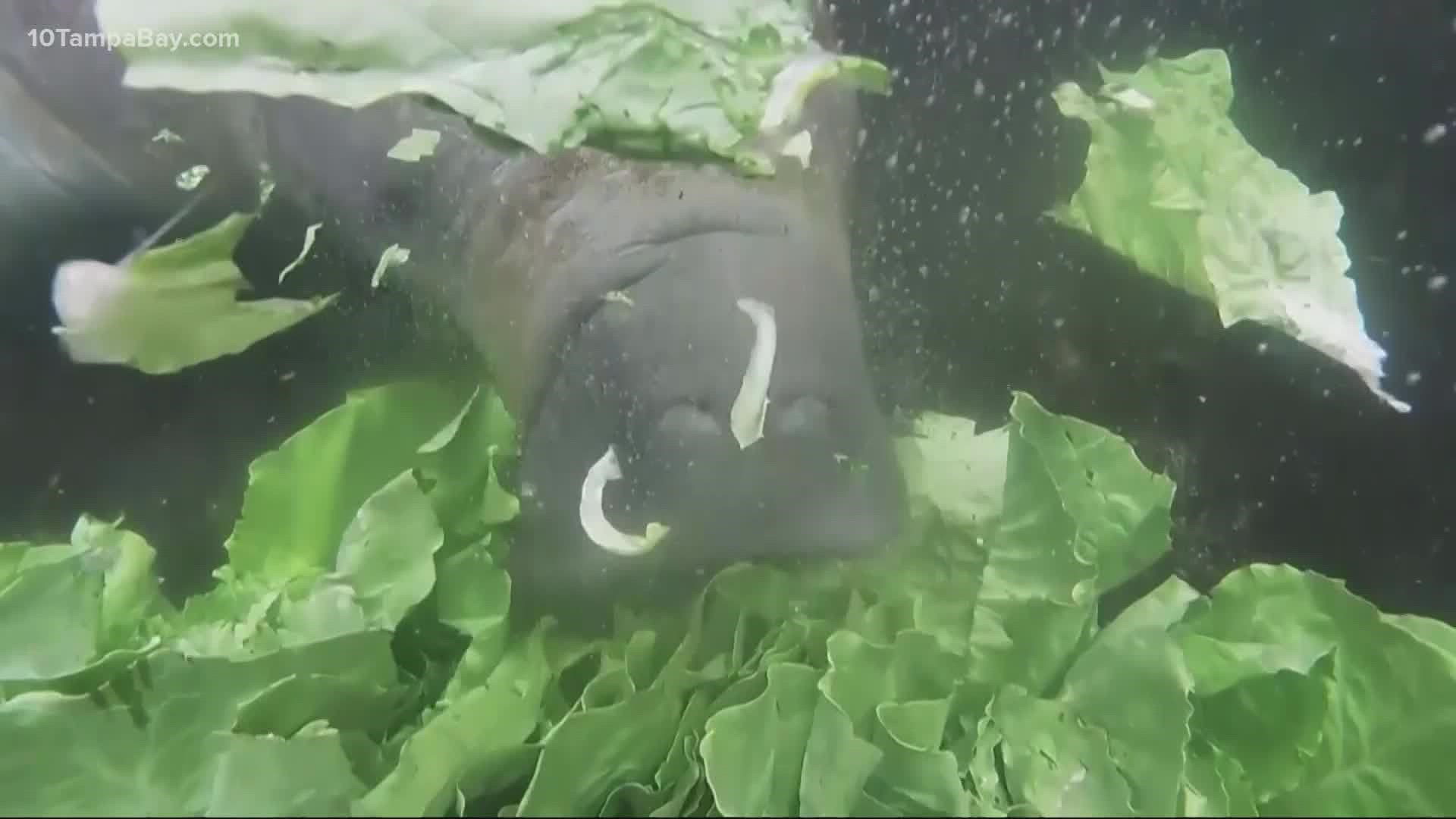ST. PETERSBURG, Fla. — The ongoing effort to save Florida's manatees appears to have one good sign — poop.
That may not sound like a good thing, but members with the joint command between the Florida Fish and Wildlife Conservation Commission and the U.S Fish and Wildlife Service say the poop means the manatees are getting enough food to digest and absorb nutrients.
"We're seeing more fecal material in the warm-water site, which means that animals are eating — and they're eating enough for them to process the vegetation," Ron Mezich of FWC told TCPalm.
"That's a good sign."
More than 80 rescued Florida manatees are in rehabilitation centers across the U.S. as wildlife officials try to stem starvation deaths because of poor water quality.
The latest numbers were released Wednesday by the FWC and USFWS as part of an unprecedented effort to feed starving manatees and treat those in distress.
The state has provided about $1.2 million for the treatment effort, officials said, with the rest of the increasing costs borne by facilities such as the SeaWorld rescue program in Orlando. There are 13 such locations at aquariums and other facilities in Florida, Texas, Ohio, Puerto Rico and elsewhere.
“It's a huge effort and they do a fantastic job,” Terri Calleson of the USFWS said. “A lot of it is happening on their dime.”
The response comes as manatees continue to die along Florida's east coast because the seagrass on which they normally feed during cold winter months is disappearing. The main reason is polluted water from sources such as agricultural fertilizer runoff, wastewater discharges and urban sources.
Last year, more than 1,100 manatee deaths were recorded largely due to starvation, well above the typical five-year average of about 625 deaths. In 2022 through last week, 326 manatee deaths have been listed, only seven from collisions with boats, according to state wildlife commission statistics.
The experimental feeding program using romaine lettuce continues seven days a week at a Florida Power & Light plant in Brevard County along the east coast where hundreds of manatees typically gather in cold months in the plant's warm water discharge area.
As of Tuesday, more than 63,000 pounds of lettuce has been provided to the manatees, Jon Wallace of the USFWS said. The food is paid for mostly by donations to the non-profit Fish & Wildlife Foundation of Florida.
“That is all still going very well,” Wallace said.
There are an estimated 8,800 or so manatees in Florida waters. That’s a big improvement from the roughly 2,000 animals in the 1990s, part of the reason they were delisted from endangered to threatened by the federal government.
Officials say it's important for people in Florida's coastal areas to report any sick or distressed manatees they see so they can be brought to a rehabilitation center.
“Overall, we view these rescue efforts as successful. This is a small victory for us,” said Andy Garrett, manatee rescue coordinator for the state wildlife commission.
But officials also stressed the approach of warmer weather does not mean the starvation problem is over, especially since some of the slow-moving, round-tailed animals will need extensive treatment.
“This need does not stop with the end of cold weather this year,” said Jon Peterson, rescue operations manager at SeaWorld. “Some of the animals have been here a long time. It does take time.”
If you see a sick, injured, dead or tagged manatee, call FWC's Wildlife Alert hotline at 1-888-404-3922. Experts remind people not to try and help the animals because manatee rescue is a skill that requires training and resources.

